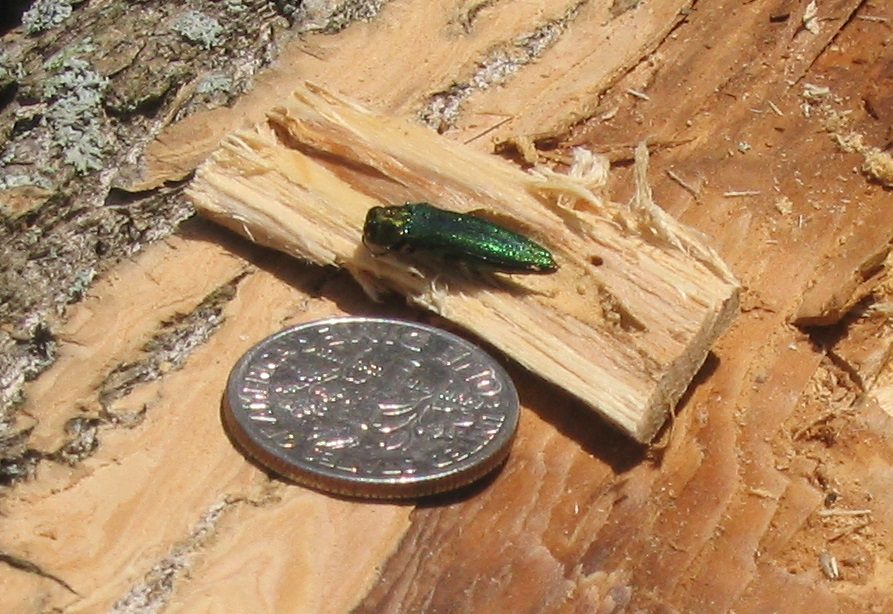We were disheartened yesterday to learn that despite the best efforts on the parts of citizens and conservation professionals throughout the region, the invasive Emerald Ash Borer has finally found its way into the state of Vermont. For those who care for and enjoy Vermont forests, this is major blow, and now more than ever it is important to help educate your friends and neighbors about this issue and ways to slow the effects, namely: DO NOT MOVE FIREWOOD! The insect itself is only able to fly short distances, and the transport of raw wood materials, with the insects hidden in the bark, greatly increases the rate of this invasive’s spread through our region.
Unfortunately, once infested, there is very little to be done in preventing the widespread loss of our white, green and black ash in the state (no more ash pack-baskets, for one!).
You can help by spreading the word, letting people know how important this issue is to the ecological and economic future of our state and taking action yourself by keeping the lookout and reporting infected trees and only sourcing raw wood materials locally. Stay tuned as the State releases more information on a plan of action to reduce the spread in our region: https://vtinvasives.org/
In the meantime, you can also learn more about the Emerald Ash Borer (EAB) : here: http://www.emeraldashborer.info/
Vermont Department of Forests, Parks and Recreation
Vermont Agency of Agriculture, Food & Markets
Emerald Ash Borer Found in Vermont
February 27, 2018 / Montpelier VT – The Vermont Department of Forests, Parks & Recreation (VTFPR) and the Vermont Agency of Agriculture, Foods & Markets (VAAFM) report that emerald ash borer (EAB), a destructive forest insect from Asia, has been detected in Vermont. Officials with the USDA Animal & Plant Health and Inspection Service (APHIS) have confirmed the identification of a beetle recently found in northern Orange County, Vermont. The insect was reported through the vtinvasives.org website.
EAB overwinter as larvae under the bark of ash trees where they feed on the inner bark tissue. Once infested, ash trees rapidly decline and are killed in 3-5 years. This pest is known to be established in 32 states and three Canadian provinces, and is responsible for widespread decline and mortality of hundreds of millions of ash trees in North America.
Ash trees comprise approximately 5% of Vermont forests and are also a very common and important urban tree. EAB threatens white ash, green ash and black ash in Vermont and could have significant ecological and economic impacts. There are no proven means to control EAB in forested areas, though individual trees can sometimes be effectively treated.
State and federal forest health officials have convened and are preparing to implement an emergency action plan in response to the recent EAB detection in Vermont. A multi-agency delineation survey effort, including personnel from VAAFM, VTFPR, APHIS, US Forest Service and the University of Vermont Extension, will be launched in the upcoming days to determine the extent of the EAB infestation. Results of the survey will inform subsequent management recommendations and quarantine decisions and will be released to the public.
Slowing the spread of EAB is very important. While adult EAB are capable of flying short distances, humans have accelerated spread by moving infested material, particularly firewood, long distances. Residents and visitors are reminded to protect Vermont’s forests by buying and burning local firewood.
Landowners with questions are encouraged to contact their county forester. You can find county foresters on this website:http://fpr.vermont.gov/forest/your_woods/county_forest/who_where.
A public information meeting is being planned and details will be announced shortly.
For questions please contact:
Barbara Schultz, Forest Health Program Manager
VT Department of Forests, Parks and Recreation
Emilie Inoue, State Pest Survey Coordinator
VT Agency of Agriculture, Food and Markets
More information is available at: http://vtinvasives.org/


